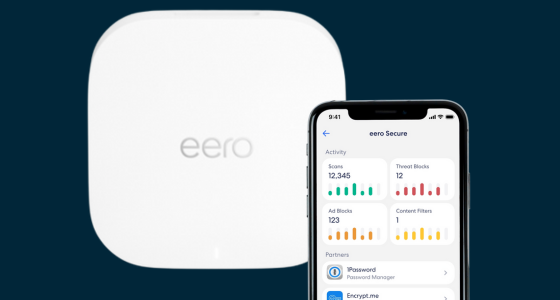Whether you’re splitting a bill, shopping online, or paying for a second-hand purchase, digital payments are built for speed and convenience. But that same convenience also opens the door to scams. When sending money is so easy, it only takes a moment of distraction, misplaced trust, or a well-crafted fake to lose it.
According to GASA’s Global State of Scams report 2024, nearly $1.026 trillion was lost to scams worldwide in just 12 months — and only 4% of victims recovered their losses. F-Secure’s Digital Moments 2025 survey also found that 83% of people encountered online scams in 2024.
At altafiber, we know a fast, reliable internet connection should also be a safe one. That’s why we’re sharing these expert tips to help you stay alert and protect your money from today’s most convincing online scams.
How Scammers Are Stealing Money in 2025
Scam tactics aren’t just more common — they’re more convincing. Here are the top methods cybercriminals use to steal money through fake payments, banking scams, and digital deception.
1. Banking Scams: Fake Pages, Messaging Apps, and Social Engineering
Scammers often reach people through email, direct messages, texts, or phone calls. Some claim to be from your bank or payment service, warning you about “suspicious activity” or asking you to verify a transaction.
Others pose as tech support or even law enforcement, pressuring you to move money to a “safe account” or install a remote-access tool — malware that can spy on you or steal funds as soon as you log in to your bank.
Many fake links lead to counterfeit banking pages that look nearly identical to the real ones — complete with HTTPS and a padlock icon. Sometimes you’re even redirected to the real site afterward, so the fraud goes unnoticed until it’s too late.
How to stay safe:
- Don’t trust messages or calls that ask for urgent action or personal details.
- Log in only through your bank’s official website or app.
- Use security tools that can detect fake pages and warn you before you enter sensitive information.
2. Banking Trojans Hiding in Plain Sight
A banking trojan is a type of malware designed to spy on your financial activity. It can install itself when you download a malicious app, open a shady attachment, or click an unsafe link — often disguised as an invoice or delivery update.
Once installed, these trojans silently capture everything you type, take screenshots, and even mimic your banking app to steal login details and codes. Some advanced versions can intercept texted authentication codes, bypassing two-factor authentication entirely.
How to stay safe:
- Avoid installing apps or files from unknown sources.
- Keep your device and apps updated.
- Use security and privacy tools to help detect hidden malware early.

3. Fake Online Stores and Payment Traps
Fake online shops look increasingly legitimate — and they surge during the year-end shopping season. You might find a “too good to be true” deal via social media or search results, only to lose your money at checkout.
These scams often:
- Capture card details through fake checkout forms.
- Ask you to “verify” payments on sketchy third-party sites.
- Trick you into bank transfers that have no buyer protection.
How to stay safe:
- Be cautious of ultra-low prices and missing contact info.
- Check refund policies and reviews before paying.
- Pay only with credit card or trusted services like PayPal.
- Use safe browsing features, which can block fake shopping sites before you even click.

4. Cash App, Venmo & Zelle Scams
Instant-payment apps like Cash App, Venmo, and Zelle are convenient — and a favorite tool for scammers. Popular tactics include:
- Fake giveaways promising “free cash” if you verify your info.
- Overpayment scams where scammers ask you to refund a payment that later bounces.
- Impersonation scams pretending to be friends or family asking for quick transfers.
What to do:
- Treat unusual money requests with skepticism, even from familiar names.
- Always confirm transactions inside the app — never rely on screenshots.
- If you suspect fraud, report it through your app immediately.
5. PayPal Phishing and Purchase Fraud
PayPal scams are evolving fast. Fraudsters now use fake shipping updates, refund requests, or invoices to lure you into logging in through fake pages that steal your credentials.
What to do:
- Access PayPal only by typing the URL directly.
- Don’t click links in emails or texts unless you’re 100% certain they’re legitimate.
- Use browsing protection to block phishing pages before they load.
What’s at Stake
The most obvious risk is financial loss — but that’s just the start.
- Identity theft: Stolen details can be used to open credit accounts or make unauthorized purchases.
- Account takeovers: Weak or reused passwords can give scammers access to multiple platforms.
- Long-term fraud: Your information might circulate on the dark web and be reused months later.
With altafiber’s commitment to safe, secure connectivity, protecting your digital identity is just as important as staying online.
.png?width=532&height=665&name=6%20Quick%20Cybersecurity%20Tips%20(4).png)
Let Smart Tools Do the Heavy Lifting
Even savvy internet users get fooled — in fact, F-Secure’s survey found that 43% of people who thought they could spot scams still became victims. That’s why modern security solutions are crucial.
altafiber recommends combining good online habits with security tools that offer:- Real-time scam and phishing detection
- Protection against fake payment portals and banking scams
- Blocking of malicious apps and websites
- Breach alerts for leaked payment or login data
- Identity monitoring and fraud alerts
These protections work silently in the background to help keep your financial data secure.
Stay Safe, Stay Connected — How altafiber Helps
At altafiber, we believe your connection should be fast, reliable, and safe. That’s why our fiber internet services pair cutting-edge speed with advanced security features designed to protect you and your family from online threats.
✅ Check out eero secure for added security and safety services to your eero devices, such as active threat protection and advanced parental controls.
✅ Explore altafiber Internet plans to stay connected with confidence.
✅ Not an altafiber customer yet? Check fiber availability in your area.

Staying informed is your best defense — and with altafiber, you’re never facing online threats alone. Subscribe to the blog today so you don't miss out on tips & more!
